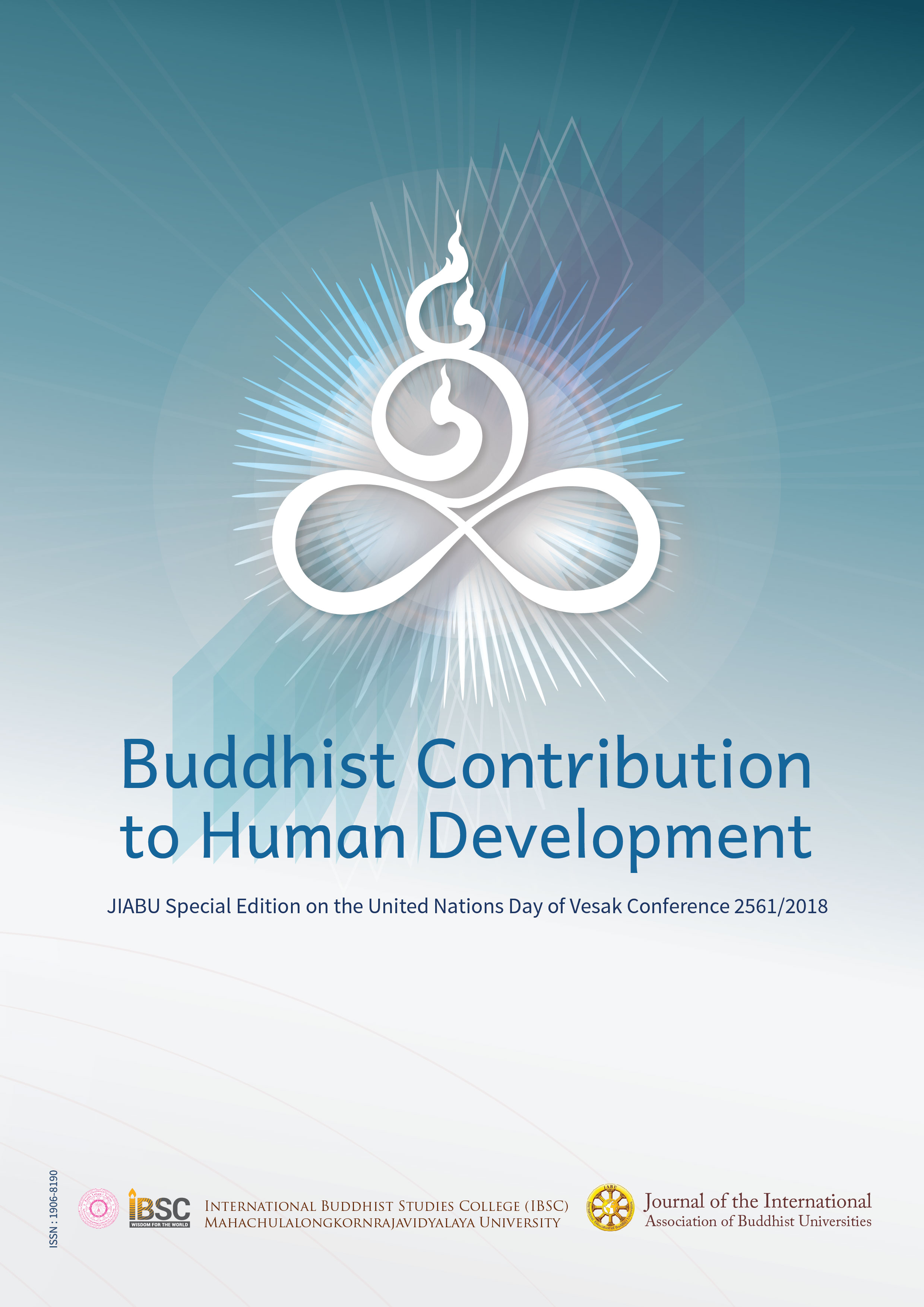The Power of the Samboilbae: The Korean Experience of Three Steps and One Bow
Main Article Content
Abstract
In Buddhism, bowing is the greatest show of respect a person can make to the
Buddha or the teacher. The custom of taking three steps came to signify the shedding of
the three poisons as well as a method of cultivating blessings and lessening our sickness,
sufferings and misfortunes, so that getting reborn in the Amitabha Buddha’s Pure Land can
be more promising. By analyzing the history and practice of protesters in Korea, it is clear
that violence can be replaced by essentially non-violent Buddhist practice which aims to
reach the Pure Land. In Korea, there have been large scale violent movements that were
effective at changing the oppressive military junta. But non-violence stops the decline of
the social movements. The Korean people had criticized the violent historical movements
and turned down their participation until the Samboilbae was effectively and collectively
practiced. With the strong commitment of the non-violence and newfangled forms of power,
people began to participate in the Samboilbae movement against the Saemanguem Land
Reclamation Project.
Article Details
Views and opinions expressed in the articles published by The Journal of the International Association of Buddhist Universities (JIABU), are of responsibility by such authors but not the editors and do not necessarily reflect those of the editors.
References
Aṅguttara Nikāya (AN), ed. R. Morris, E. Hardy, London: PTS, 1885-1900.
Kasan Encyclopedia of Buddhism, vol.12, Seoul: Kasan Buddhist Institute.
Bhikkhu Bodhi, The Numerical Discourses of the Buddha: A Translation of the Aṅguttara
Nikāya, Somerville MA:Wisdom Publications, 2012.
Cho, Daeyup, “The enlargement of citizens’ political movement and the prospect of Buddhist
citizens’ movement,” Buddhist Review, vol.1, Seoul, 1999.
Lee, Youngchul, “The reality and the task of the Buddhist NGOs,” Buddhist Review, vol.17,
Seoul, 2003.
Yoon, Younghae and Jones, Sherwin, ‘Ecology, Dharma and Direct Action: A Brief Survey
of Contemporary Eco-Buddhist Activism in Korea’, Buddhist Studies Review, vol.
31.2, 2014.
http://www.birdskorea.org/Habitats/Wetlands/Saemangeum/BK-HA-SaemangeumSamboilbae.shtml
http://thanhsiang.org/kl/archive/2007/s-religion/OneStepOneBow/tanOneStepOneBow07.
htm
http://www.ohmynews.com/NWS_Web/view/at_pg.aspx?cntn_cd=A0000123461
http://kor.theasian.asia/archives/28612
http://www.ohmynews.com/NWS_Web/view/at_pg.aspx?}CNTN_CD=A0001088381
http://news.kukinews.com/article/view.asp?arcid=0008643686&code=41121111&cp=nv
http://justsomereadings.blogspot.kr/2012/11/i-bow-to-you-enlightened-being-to-be.html
http://www.jenchen.org.sg/vol7no3e.htm
http://blog.naver.com/PostView.nhn?blogId=sambolove&logNo=220450424035


